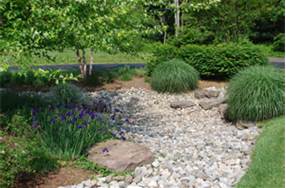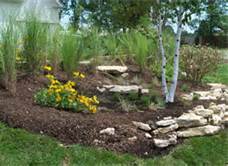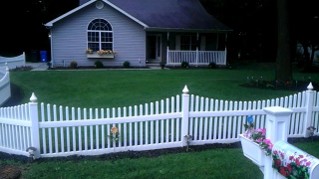There are many good reasons to consider overseeding your lawn. It is an excellent natural way to reduce the number of weeds in your lawn. It is a good solution for thin lawns, to make them fuller and more lush looking. Overseeding your lawn can fill in any bare patches, and provide a soft green background for all the landscaping around your house.
Overseeding to reduce weeds:
Overseeding to reduce weeds is one of the easiest and most natural ways to reduce weeds in your lawn. Grass seeds germinate and grow earlier than most of the weeds do in the spring. If you overseed your lawn in the fall the new grass will crowd out most of the weeds attempting to grow in your lawn. This means that you no longer need to worry about pre-emergent weed killers or other weed removal methods. Simply apply a new layer of grass seed in the fall and spring will find you with a fuller, greener, weed free lawn.
Overseeding your lawn to reduce thin spots:
Seeding your lawn in the spring or fall can help to fill in any areas where the grass is thin. If you fertilize your lawn and apply a plant food such as Soil Booster Blend a week before you overseed it will allow time for the soil to absorb the nutrients without burning the new grass as it emerges. Some people recommend overseeding in the fall as this also reduces the weeds in your lawn, but it is just as effective if you overseed in the spring. Plus you get to enjoy the fuller, thicker lawn immediately instead of having to wait for spring to see the result. Just be sure to allow grass to remain at least 3 inches long after mowing, this allows the new grass to develop a nice deep root systems that will ensure healthy grass for years to come.
Overseeding your lawn to fill in bare patches:
Seeding your lawn to fill in bare patches can be done in two ways. Some people prefer to overseed only the area where bare patches have occurred. Other people see this as a good time to go over the whole yard with a new layer of seed. Either method can benefit your lawn. If the rest of your lawn is full and weed free then you may want to consider just filling in the bare area with a patch kit like, Lawn Patch Repair Kit. However, if you have noticed a general thinning of your lawn in general you may want to overseed the whole lawn.
This process can have many benefits from fewer weeds to a more lush appearance. It is a fairly inexpensive method to repair bare patches and thinning areas in your lawn and provides a beautiful background for the rest of your landscaping. Even the most beautifully done hardscaping needs a background to stand out against to allow it to show to the best advantage.




